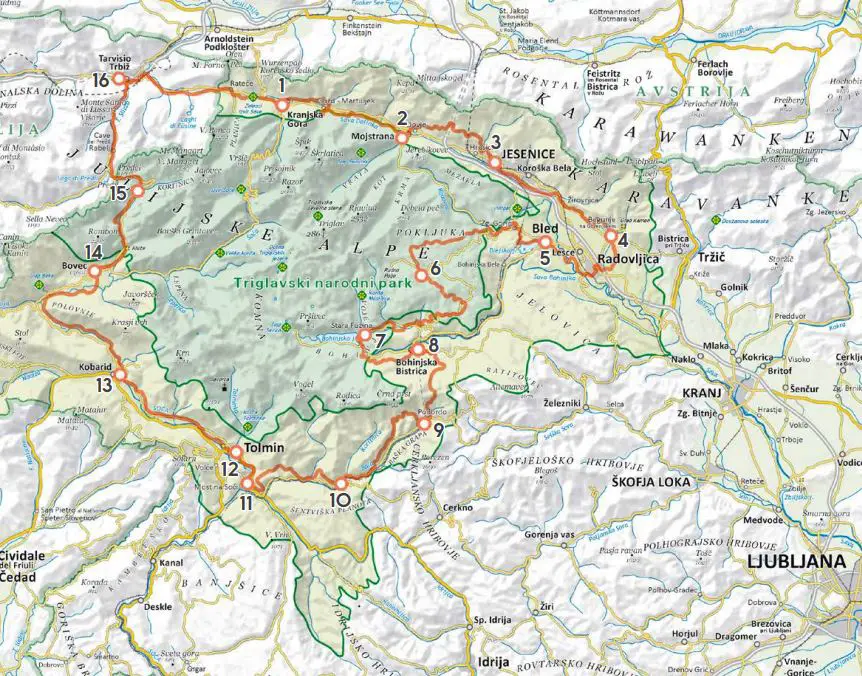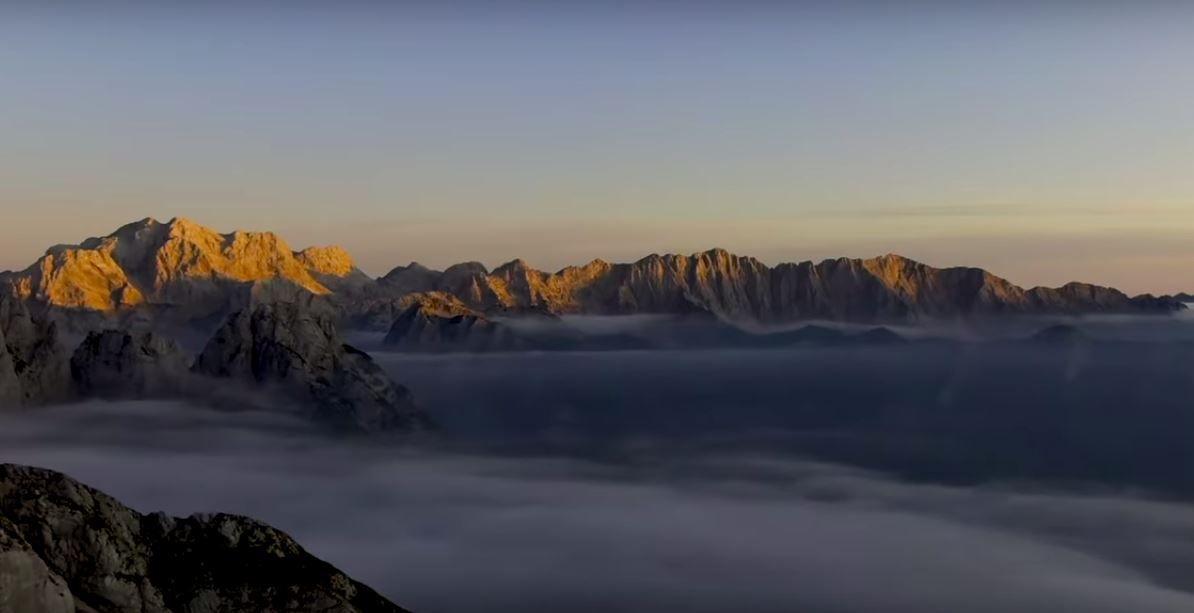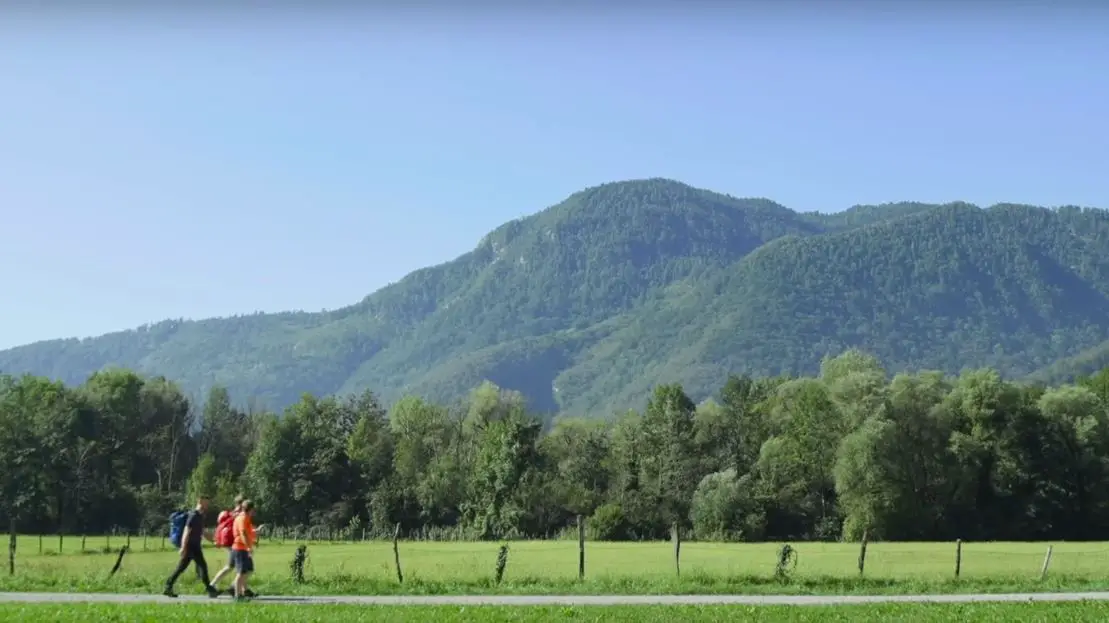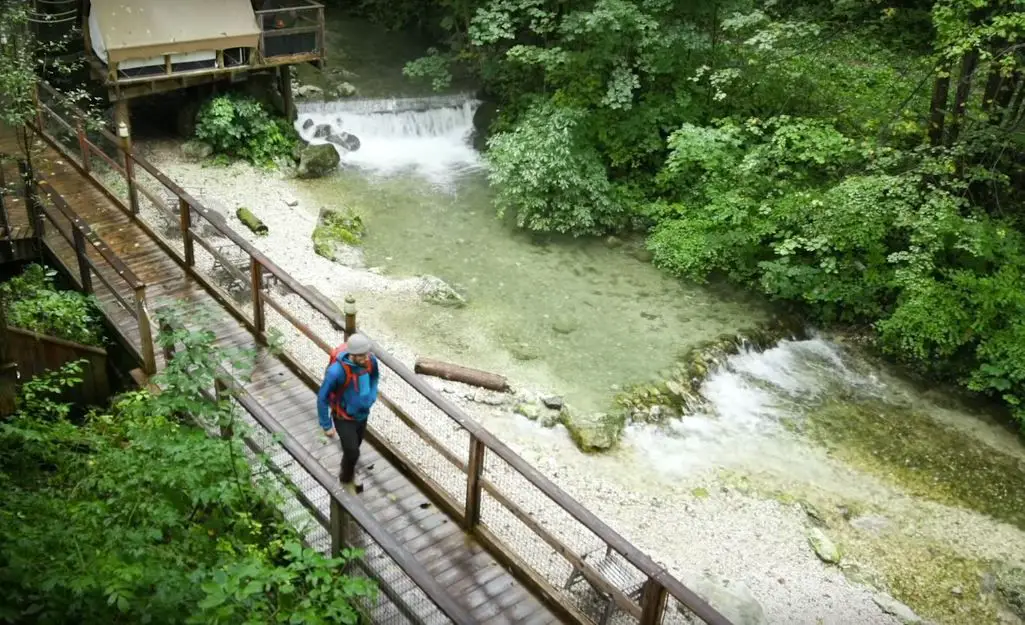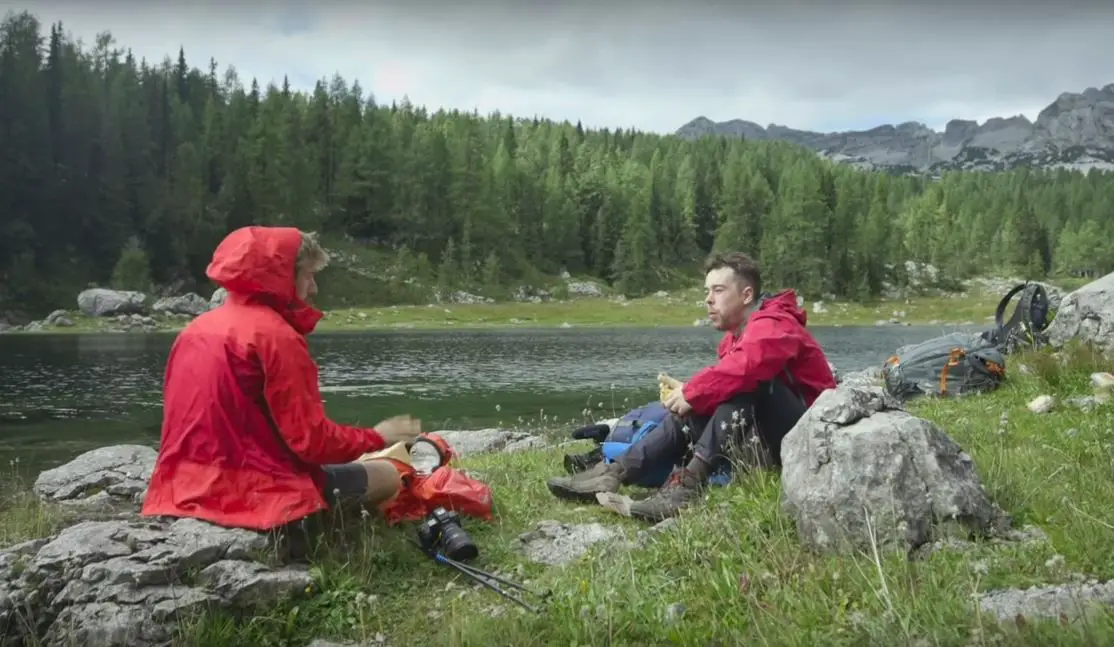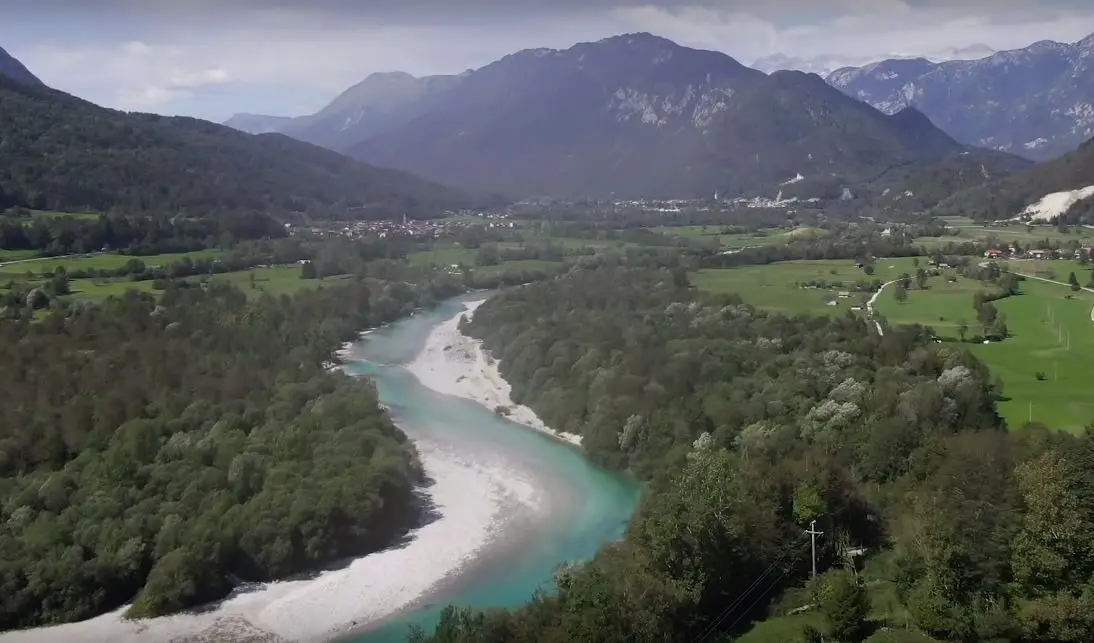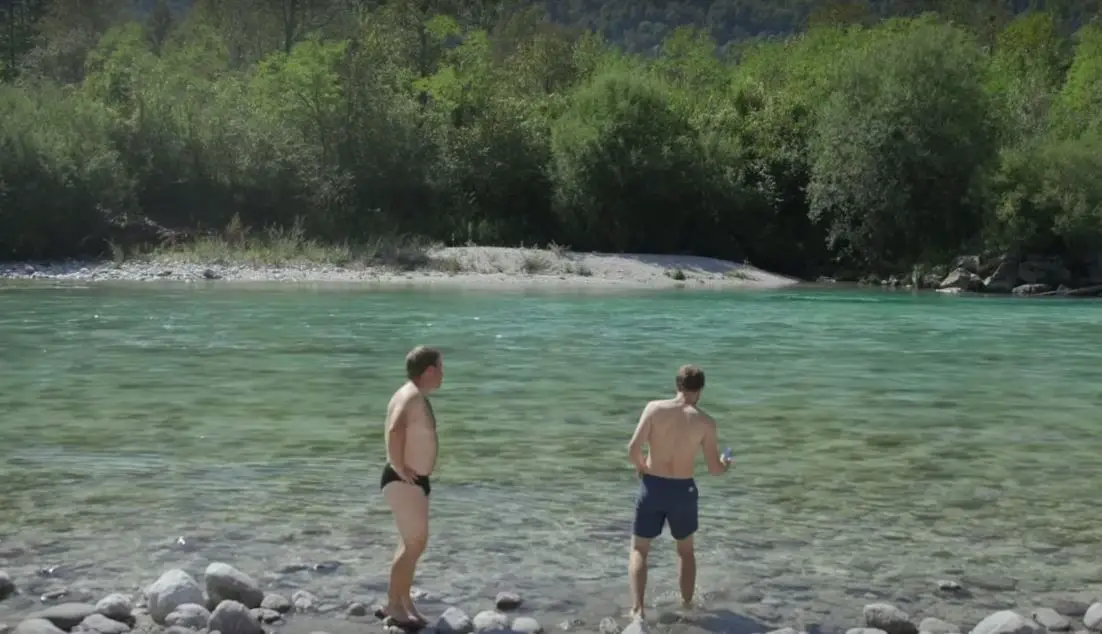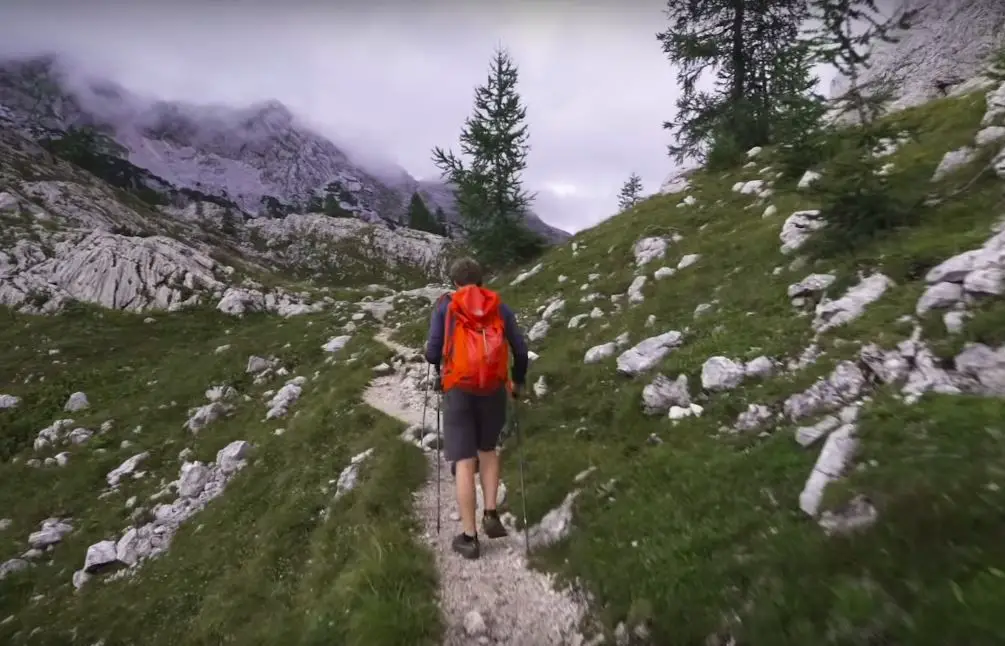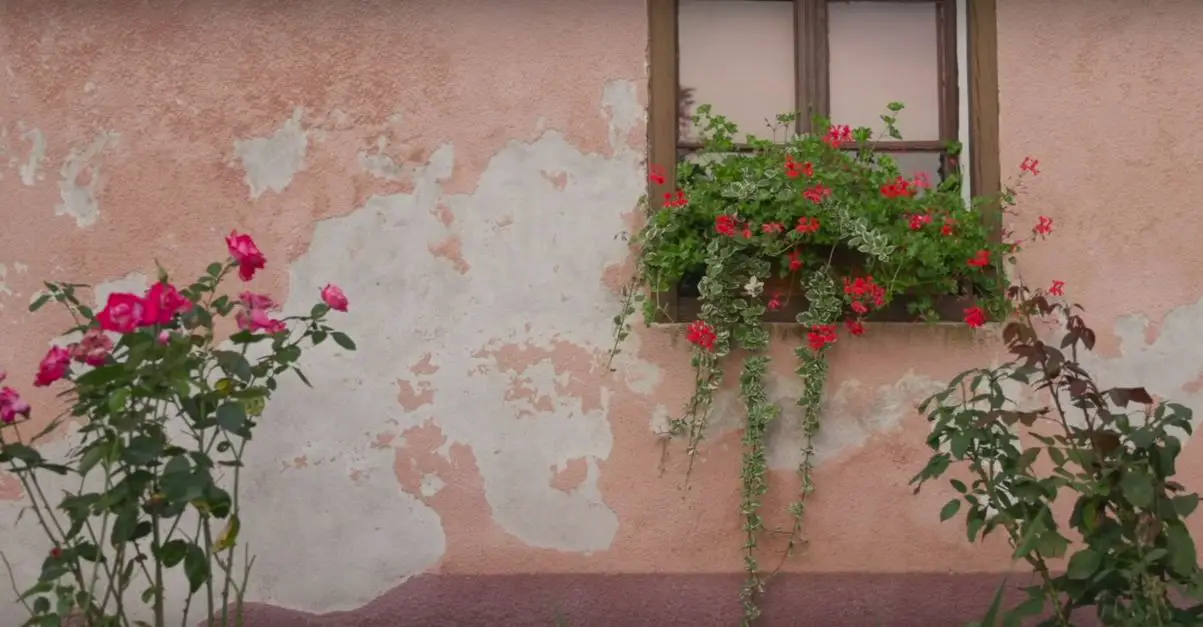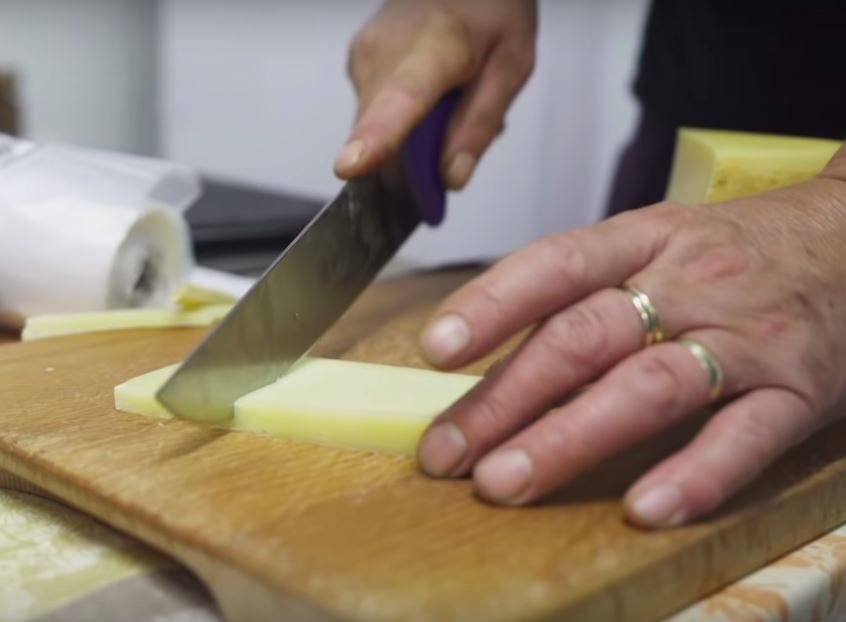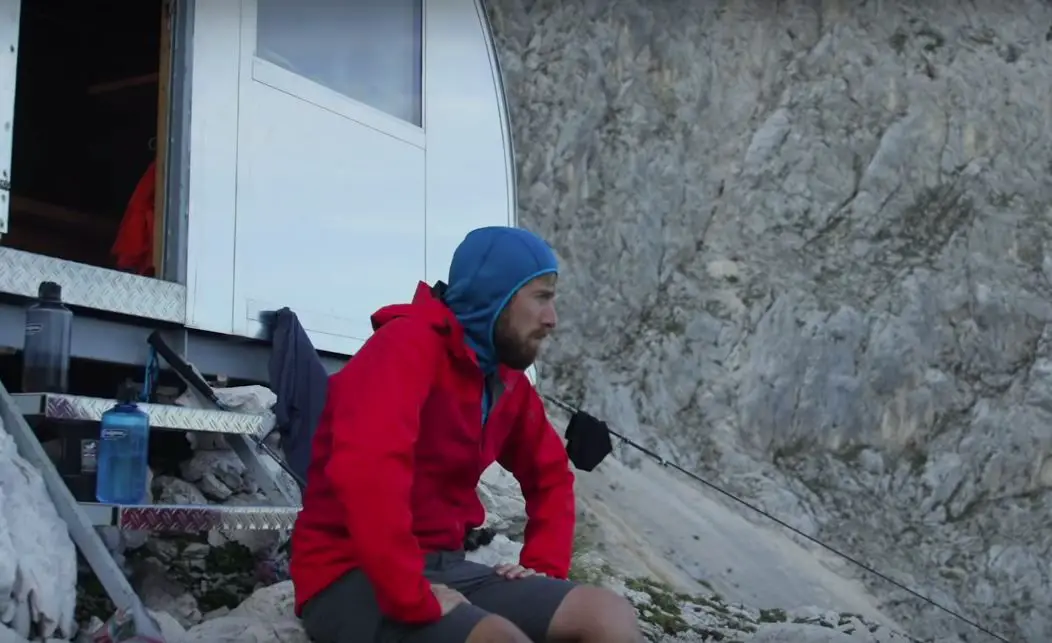Travel
STA, 23 October - The Postojna Cave is planning to put on display almost two dozen olm offspring that hatched three years ago, yet under very strict conditions, the cave operator has announced.
Of the 22 Proteus anguinus offspring, as many as 21 animals have survived, which scientists consider an amazing achievement.
The baby dragons, as they are sometimes lovingly referred to, are growing up in an underground laboratory developed especially for this purpose.
Since Proteus anguinus' larvae are extremely vulnerable and susceptible to various infections, special conditions had to be provided to increase the chances of their survival.
The scientists working for Postojnska Jama are thrilled about the 92% survival rate and the offspring's fast development.
As many as 64 eggs were deposited in 2016 by what is due to its fair complexion often termed "human fish", but the chances of any larva hatching and surviving were minimal.
Statistics show that out of over 100 eggs deposited by a female olm in its lifetime in a natural environment, only two offspring would fully grow up.
While measuring 1.7 centimetres when hatched, the baby dragons are now already 12 centimetres long, so they will soon be transferred to larger aquariums.
"We were worried about how they would accept food, how they would 'socialise'"... A single mistake could result in losing all the 22 precious baby dragons," the company said in a press release on Wednesday.
What do olm eat? How long can they live? How many toes do they have? Learn all this and more here
The city of Ljubljana is a photogenic one, but if you see a lot of pictures then pretty soon your eyes will glaze over from the repetition of the same colourful buildings, the same picturesque bridges, and the same man playing the accordion in Prešeren Square.
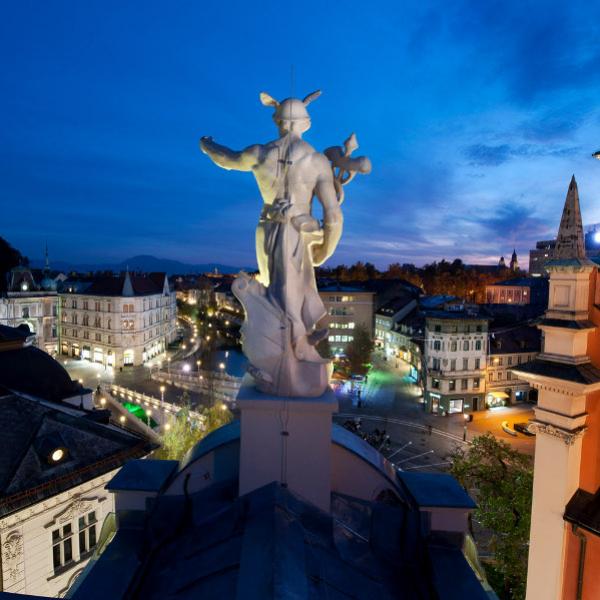
On top of the Emporium building, looking down at Prešeren
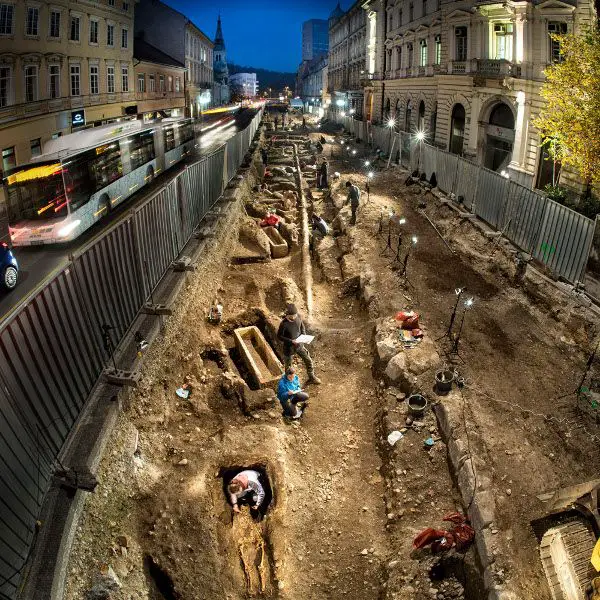
Roman remains at Gosposvetska ulica
A new exhibition, on at Ljubljana Castle until 12 January, 2020, shows the city from some other perspectives, offering views you don’t see every day. Called (Ne)Znana – (Un)known – the striking and original photographs, shot by Domen Pal, Branko Čeak and Jože Maček, take you from the heights of the city to the sewer pipes beneath it, from painted ceilings to a child on a sled in Tivoli, and much more besides.
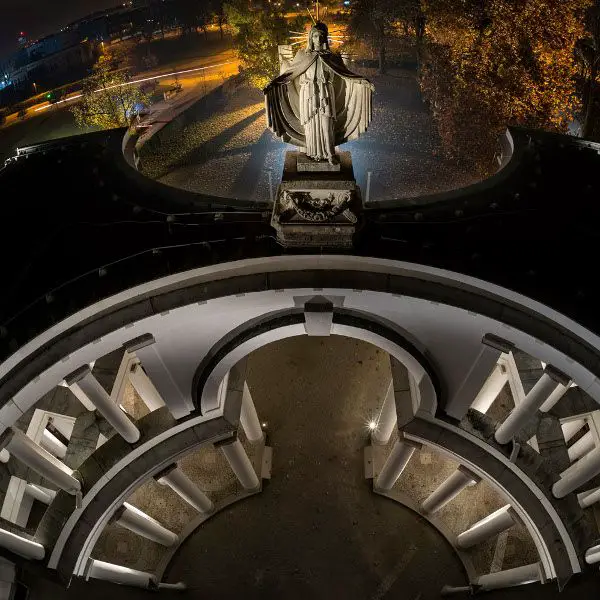
Žale Cemetery
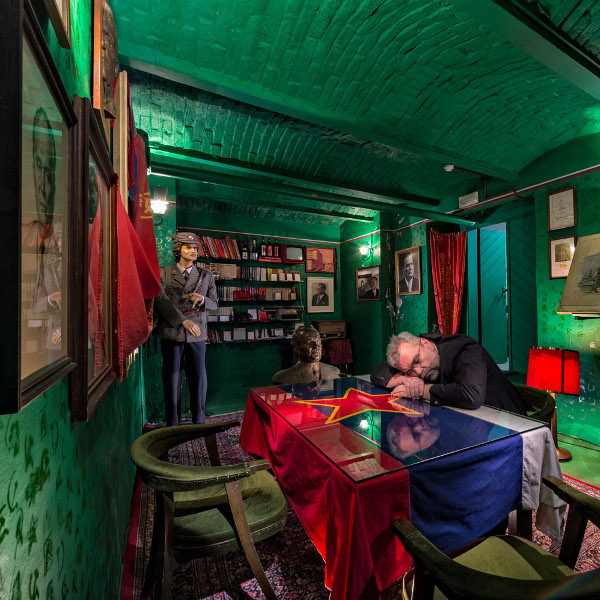
Red corner in Hotel Union
The project started out with some assignments for National Geographic Slovenia, and will continue into the future. For now, you can see these and other photographs in the "S" Gallery, Ljubljana Castle, open from 09:00 to 20:00 and free to enter.
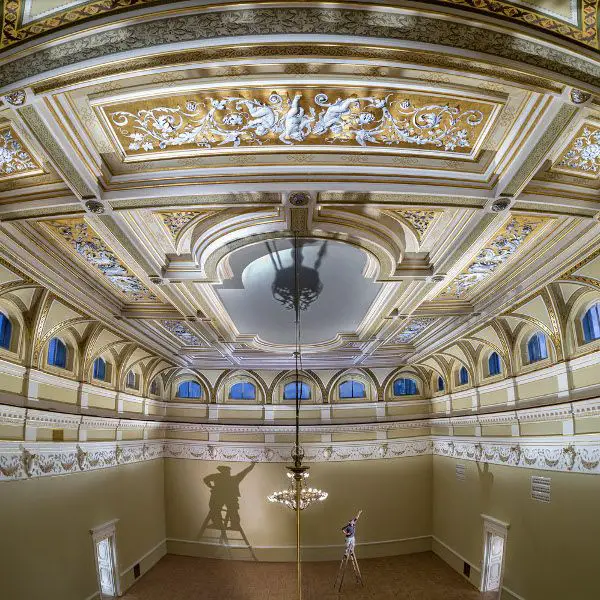
The National Gallery
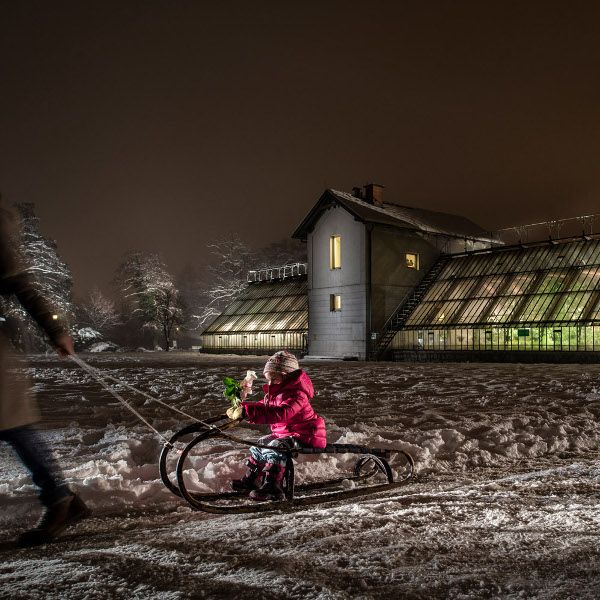
Tivoli Park
More details are here, while you can test your knowledge of the country’s most-visited tourist attraction with our guide to 25 Things to Know about Ljubljana Castle, or find out 25 Things to Know About Ljubljana itself
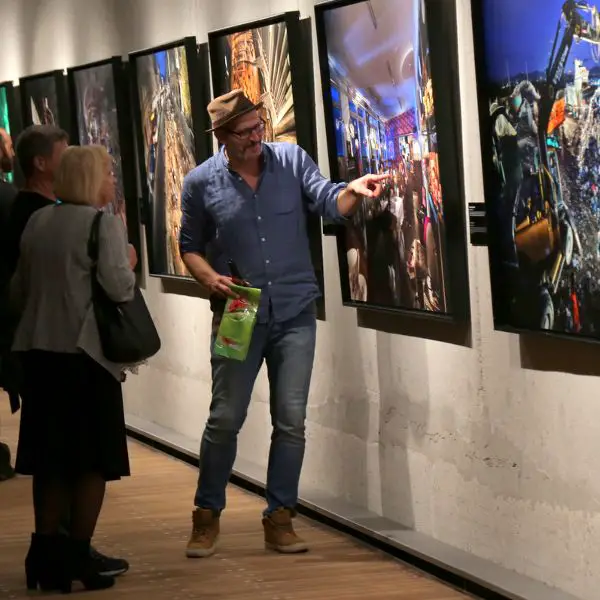
At the exhibition. Photo: Miha Mally
Slovenia’s attempts to get visitors to stay longer, and visit more places than Ljubljana and Bled, are seeing new offers and attractions being launched around the country. One recent opening is the range of “Bike Slovenia Green” tours, which take you from Kranjska Gora to Koper, as detailed here, while another is the 270-km long Juliana Trail. This is a circular route in 16 stages, with the highlights including Triglav National Park, Bled and Bohinj Lakes, Soča River Valley, Radovljica, Kranjska Gora and Pokljuka Plateau.
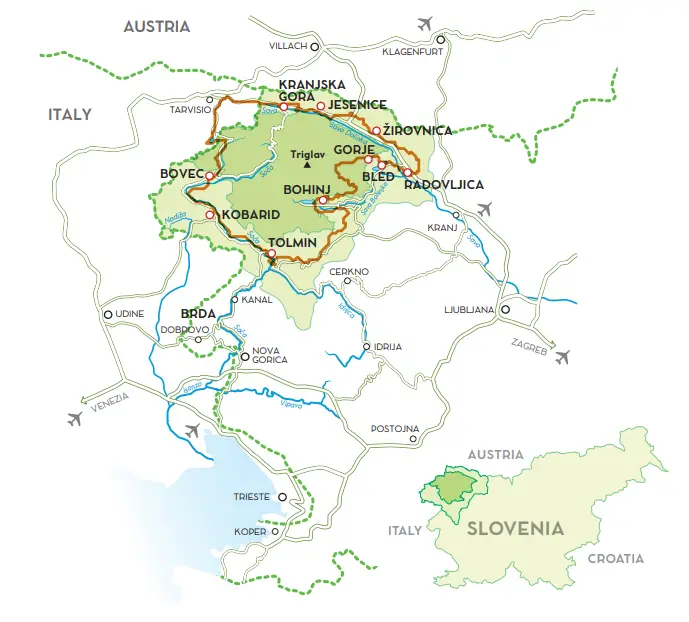
Source: slovenia.info
Source: slovenia.info
As the accompanying press release puts it:
To find, walk, learn and explore the unknown diversity, to offer and use what is unknown to others; this is the Juliana Trail. A trail of a personal pilgrimage to oneself, to pristine nature and its magical beauty, into the diversity of the landscape and biodiversity, to hidden and unknown places with magical power (rivers, lakes, waterfalls, forests, exceptional trees, colourful flowers, rocks of unusual shapes), and last but not least: to culinary, cultural and historical treasures.
The Julian Alps Hiking Trail is planned so it’s possible to spend the night where a stage starts or ends, along with opportunities to buy refreshments. Moreover, where possible stages start at railway stations or bus stops, the route more accessible to all and encouraging the use of public transport.
All the following images are screenshot from the embedded video
The average length of the 16 stages is 17.5km, assessed at taking between 4 and 5 hours and rated as non-demanding. The list of stages is shown below, while more details on each stage can be found here, or on the related PDF guide. There’s also an app due to launch in late October, while more information is coming on the Julian Alps webpage in November.
- Kranjska Gora–Mojstrana
- Mojstrana–Jesenice
- Jesenice–Begunje
- Begunje–Bled
- Bled–Goreljek na Pokljuki
- Goreljek na Pokljuki–Stara Fužina
- Stara Fužina–Bohinjska Bistrica
- Bohinjska Bistrica–Podbrdo
- Podbrdo–Grahovo ob Bači
- Grahovo ob Bači–Most na Soči
- Most na Soči–Tolmin
- Tolmin–Kobarid
- Kobarid–Bovec
- Bovec–Log pod Mangartom
- Log pod Mangartom–Trbiž Tarvisio
- Trbiž Tarvisio–Kranjska Gora
STA, 16 October 2019 - Foreign tourists who visited Slovenia in April and May spent an average EUR 178 a day in the country, with tourists from non-European countries spending more, EUR 264, the latest statistics released on Wednesday show.
The sum was spent on accommodation, food and drinks, fare around Slovenia, leisure and the purchase of other goods or services, the Statistics Office (SURS) said.
In Slovenia's capital Ljubljana, the sum was the highest, amounting to EUR 249, whereas tourists visiting municipalities in mountainous areas spent the least, EUR 129.
An average Austrian tourist spent EUR 135 a day in Slovenia, an Italian spent EUR 126 and a German tourist EUR 124.
Hotels proved to be the most popular choice for tourists in the spring, with four in five foreign tourists choosing them as their accommodation.
As many as 80% of the tourists who were accommodated at hotels were in Slovenia on a private visit and 18% on a business trip.
Three quarters of those who visited for private reasons were in Slovenia on a holiday, whereas the share of those who were here on business was the highest in Ljubljana, at 30%.
The majority of tourists book accommodation on their own; in April and May 31% of foreign tourists did so directly at the hotel of their choice, 26% used online options and 25% had the help of a travel agent.
Of the foreign tourists accommodated at hotels, 45% visited Slovenia with a spouse or partner, 22% travelled on their own, 11% with their family and just as many with friends.
The majority of the tourists accommodated at hotels came from Italy (15%), followed by Austria (12%) and Germany (8%).
As many as 93% of Italian tourists and four in five Austrian and German tourists visited Slovenia for private reasons, SURS data also shows.
Central bank figures, released on Tuesday, meanwhile show that revenue from foreign tourists visiting Slovenia continued to grow in August.
It rose by 1.3% to EUR 398 million over August 2018 and totalled EUR 1.91 billion in the first eight months of the year, a rise of 3.2% year on year.
In 2018, the country's revenue from foreign tourists reached EUR 2.71 billion, up almost 12%, while Slovenia's goal is EUR 3.7 to 4 billion until 2021.
More details on this data can be found here
Bike Slovenia Green is a project developed by the Slovenian government, EU and Visit GoodPlace – a sustainable travel agency. It presents a growing a series of one-day cycling loops, of touring level and with low technical difficulty, that allow people to see the diversity of the country at a slower and more relaxed pace. Only destinations that have obtained the Slovenia Green certificate are able to take part in this project, a status gained when a location meets certain standards with regard to sustainable development.
There are already 12 such tours available – seven of Ljubljana and its surroundings, and others of Goriška Brda (focusing on winemaking), Cerkno (green nature), the Vipava Valley (castles), Komen – the Karst (stone, wine and pršut / prosciutto), and Bohinj (the Julian Alps). At the start of November, these will be joined by a new long-distance, multi-stage itinerary that connects seven locations, with the route taking riders from the mountains of Kranjska gora to Koper on the Adriatic coast, with a break in the middle for a train ride, as seen in the map below.
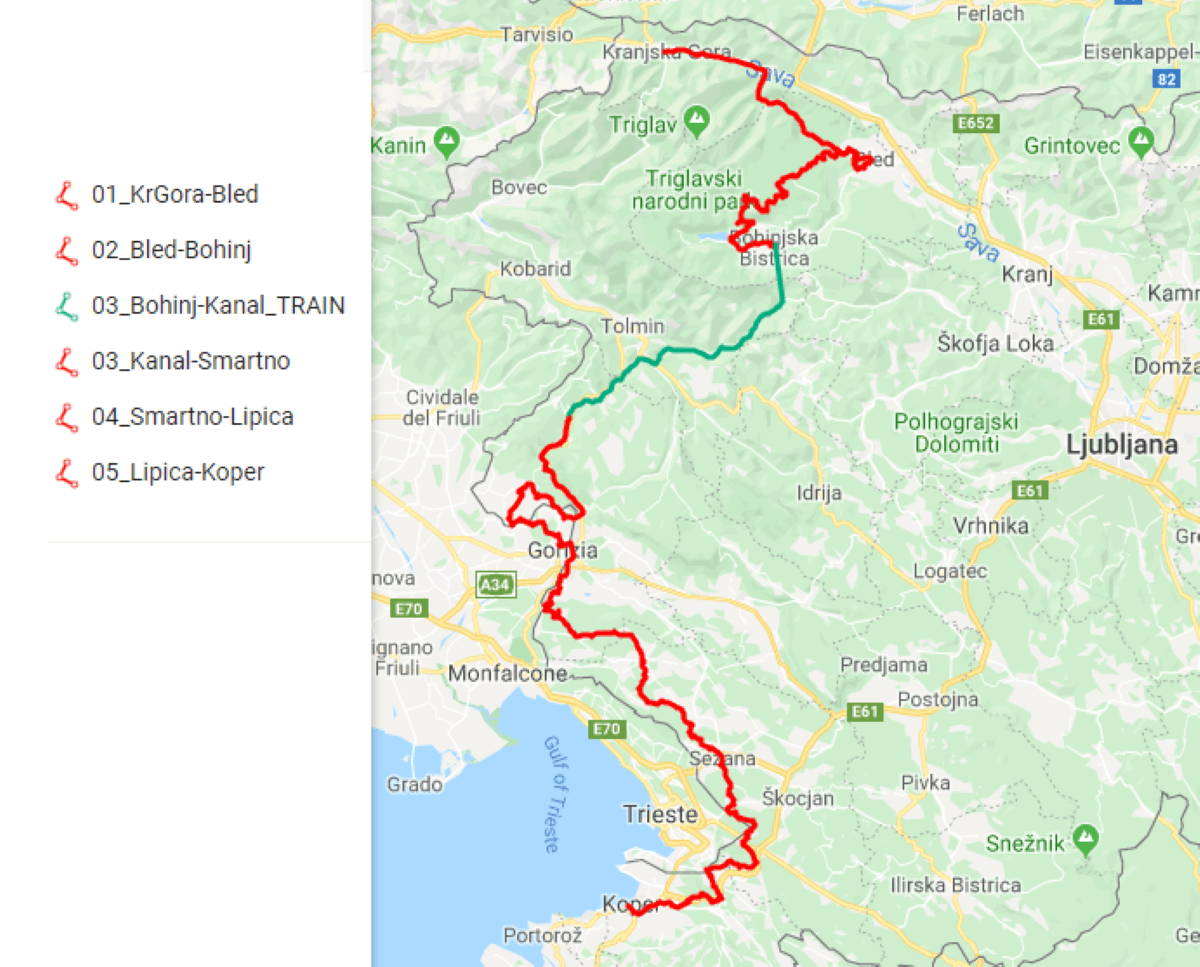
We can’t currently embed the map – sharing hasn’t been enabled – but you can visit it here
Done in five legs, from Kranjska Gora to Bled, Bled to Bohinj, Bohinj to Kanal ob Soči (by train), Kanal to Šmartno (with its wine), Šmartno to Lipica (with its horses), and then Lipica to Koper by the sea.
If they are the same as the current tours, then they can be done guided or self-guided, with €14 for the latter getting you a navigation pack with GPS tracking. More details can be found here – although note that the new tours do no launch until 1 November 2019.
If you’re not a frequent flier maybe the Adria Airways collapse feels rather abstract, but a study by ForwardKeys, a travel analytics firm, claims that it cut 59.7% of international seat capacity to and from Slovenia, and the loss of direct flight connections with 24 countries, figures that make the disruption easy to imagine.
The study noted the loss of regular flights from Slovenia to Albania, Bosnia and Herzegovina, Bulgaria, Croatia, Czech Republic, Denmark, Egypt, Iceland, Ireland, Italy, Macedonia, Norway, Spain, Sweden, and Switzerland. Season flights to and from Estonia, Georgia and Greece are also unavailable, while Adria’s collapse cut the irregular services to and from Cyprus, Hungary, Italy, Jordan, Latvia, Romania and Ukraine.
The report, which can be found here, also states that key source markets like Austria, Germany and France has also been affected, as Adria Airways accounted for 99.6%, 87.3% and 50.8% of seat capacity on flights for these countries.
The Treetop Walk is a forest trail, built at the level of the treetops level rather than on the forest floor, and set on the green hills of the Pohorje alpine massif in Central Styria.
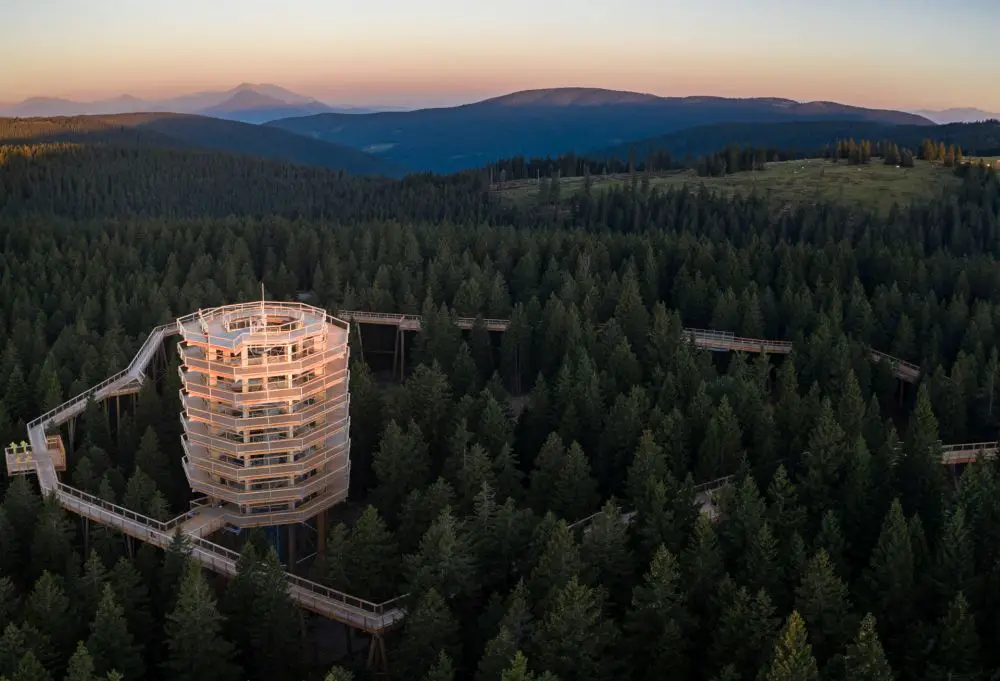
More precisely, the Treetop Walk is built on Rogla hill with an elevation of 1517 metres, which also hosts one of Slovenia’s most popular ski resorts.
The Pohorje Treetop Walk is just over a kilometre long in total and includes a 37-metre high tower with a view of all the surrounding hills, Kamnik-Savinja Alps and even Triglav.
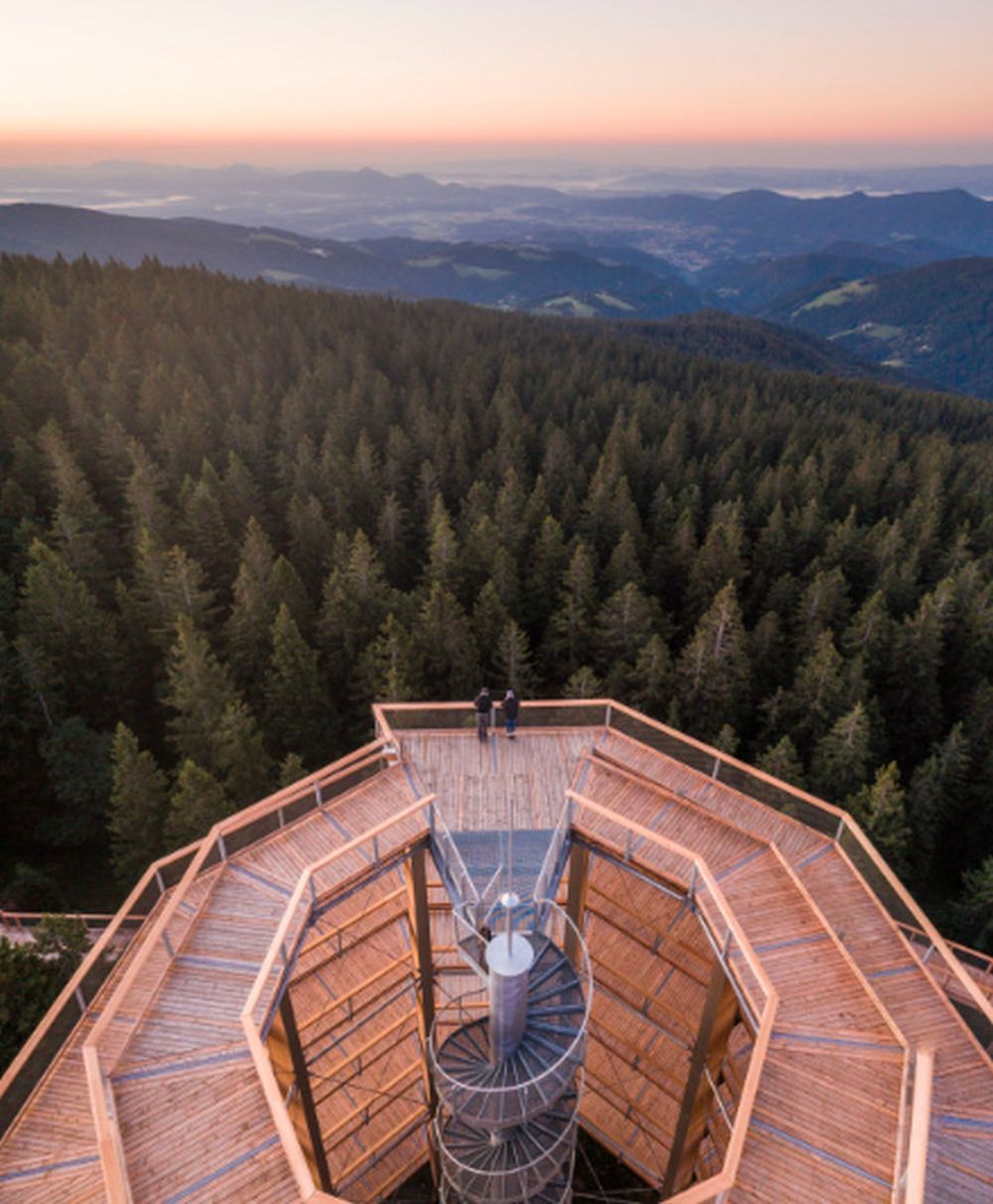
The Walk is fully barrier-free, and hence stroller and wheelchair friendly. The path to the tower climbs gently with a maximum climb of 2-6% and transparent meshes along the sides of the walk ensure perfect visibility for wheelchair users and young children.
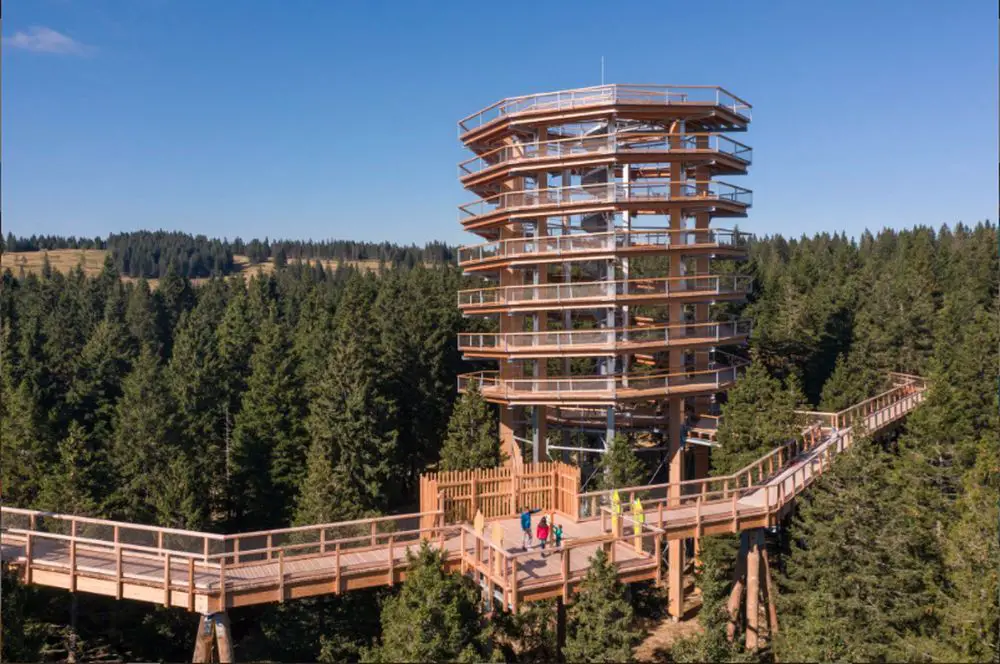
There are several information stations on the way, where visitors can learn about the flora and fauna of the environment below them.
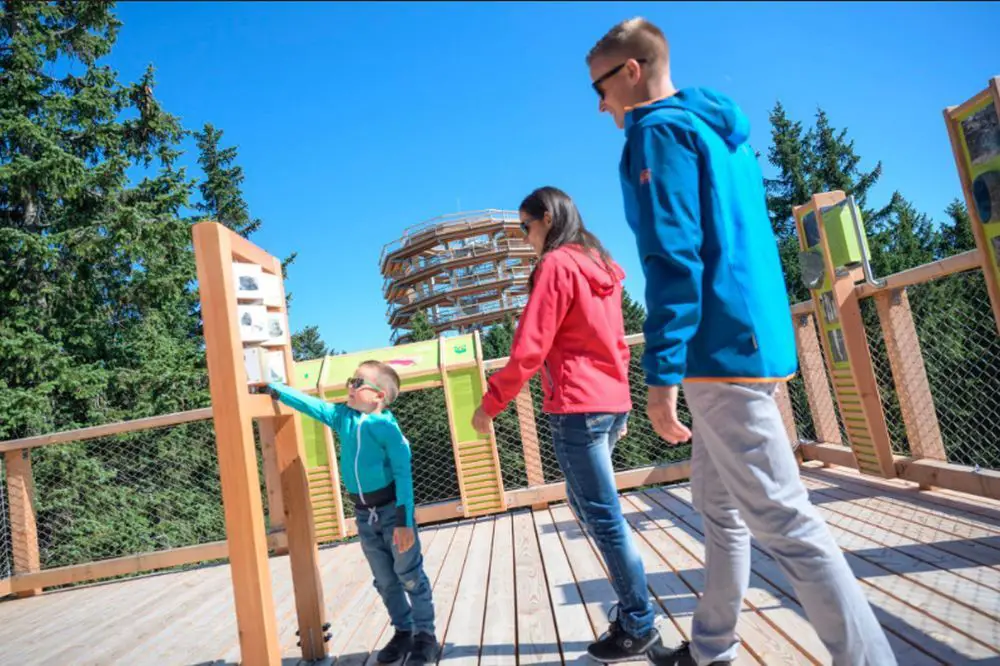
Less mobile visitors have the option on obtaining a wheelchair for free at the ticket office. Dogs are not permitted, and your pet will have to wait for you in the kennel by the entrance.
Each year new content is planned to be added to the existing structure, starting with a 40m-long toboggan, a slide from a tower back to the walkway, expected for spring 2020.
Opening hours are adjusted to the daylight hours. You can find more information on the walk, tickets and opening hours at the Pohorje Treetop Walk’s website.
October 9, 2019 - How to travel between the Slovenian and Croatian capitals? All you ever needed to know about travelling from Ljubljana to Zagreb and vice versa.
Both the Slovenian and Croatian capitals are growing in popularity, and the good news is that there are many options to get from one to the other. An overview of options:
Ljubljana to Zagreb by car

Many people travel between the two capitals by car, and the direct motorway route is simple enough, a distance of about 140 km. The border crossing is at Bregana. Actual driving time is about 1 hour 45, but you advised to allow extra time for the border crossing, especially in season. There are webcams at many border crossings (see below) so you can see what awaits. Be aware that if you travel on a Slovenian motorway, you MUST purchase a vignette, available from petrol stations and locations. The minimum cost is 15 euro for a 7-day vignette. And if you think that is expensive, try not buying one and you will find fines in the region of 300 euro. There is also a small toll to pay on the Croatian motorways (under 2 euro). It should be noted that Croatia is not yet in the Euro zone, and Croatian kuna is the local currency, although you can pay by card or in euro at the toll.
And if you do buy the vignette, you might want to check out one of my favourite niche articles, which has proved surprisingly popular - How to Remove a Slovenian Vignette from Your Windscreen.
You can track the latest traffic and border news in English here.
With or without a vignette?
But if you want to save those precious 15 euro, you can...
Here’s a story about driving in Slovenia without a vignette. You can use Google Maps (route options) to choose a route without highways and tolls (but note catching tourists without a vignette who take a wrong turn is a sport for police near the border).
Learn more in How to Drive Across Slovenia Without Buying a Vignette.
Car rental options
There are many international car rental companies, as you would expect. As both countries are now in the EU, there are no particular complications, and one-way drive is a common practice.
Slovenia, Croatia and Schengen
While both Slovenia and Croatia are in the EU and so there are no customs issue, they are separated by a manned border, at least for now. This is because Croatia is not yet in the Schengen zone (at time of writing - end of 2019), although its entry is getting closer. The latest estimates put entry date at 2021.
While the Schengen border is a pain for now and brings additional travel time, it is also an important way of life for many non-EU travellers who are on a 90-day Schengen visa. Lots of them come to Croatia and stay until they can go back, and there are frequent forum posts asking whether or not the passport gets stamped at the Croatian - Slovenian border. The answer is almost always at the main crossings, such as Bregana, not always at smaller crossings (unless you request it).
Crossing the border between Croatia and Slovenia - what you need to know
With no customs checks, the process of changing countries should be fairly quick, but the external Schengen border slows things down (this border should disappear once Croatia joins the zone). But expect delays in season, for this is a VERY popular route to the Adriatic coast, and you can find yourself stuck for an hour or two in queues if you don't plan ahead.
In order to make things easier if you want to plan ahead, we have prepared a map of all the border crossings, details of webcams and lots of insider tips in our special guide to crossing the border from Slovenia to Croatia.
Ljubljana to Zagreb private transfer
Nothing quite beats the experience of having someone else worry about all the driving while you relax and enjoy the view, and if you are looking for a private transfer, look no further than Octopus Transfers, whose rapidly expanding regional network is known for its great service, modern fleet and professionalism.
Ljubljana to Zagreb by train
There are four direct trains a day, five in the summer and winter seasons. It takes a little under 2.5 hours. The timetable is here.
Bus travel between Ljubljana and Zagreb
There are almost 30 buses, including night buses, all of which go from the bus terminal in front of the train station. The prices are around 10 euros, and they run from 03:45 to 23:45 (LJ to ZG). Travel time is from 1.5 hours to 3hr 15min, with the average being 2.5 hrs. The website has a warning on delays at the border.
Timetable from Ljubljana to Zagreb is here.
Timetable from Zagreb to Ljubljana is here.
Flights from Ljubljana to Zagreb
There are no flights between the two cities - the distance is too short.
How to get from Ljubljana Airport to Ljubljana for onward travel to Zagreb
Many tourists use Ljubljana Airport as an access point to Zagreb, and the quickest and easiest way from the Slovenian airport to the Croatian capital is by private transfer.
For those on a budget, however, a trip into Ljubljana is required. Here is all you need to know about getting into town.
From Zagreb Airport to Zagreb for onward travel to Ljubljana
Similarly, from Zagreb Airport, our Total Croatia Zagreb Airport guide can help you into town and then onwards to Ljubljana.
And now that you have arrived at your destination, what to do next?
Here are 25 things to know about Ljubljana.
And the Total Croatia Zagreb in a Page guide.
Forbes is the latest publication to turn it’s attention to Slovenia as a tourist destination, with a short article from Amber Gibson, an international travel writer rather than a local specialist.
Titled “Five Reasons to Visit Slovenia”, it’s the kind of thing that anyone who knows the country will try and write in their head before reading. Bled, surely, will make the list, and likely Ana Ros and Hiša Franko. Ljubljana too, of course, but what will be highlighted in the city, and will there be anything that falls under the category of hidden gem? (A term that, we’re glad to report, isn’t used once in the story.)
Gibson’s guide in the county was Vesna Jona, who notes that Slovenia is less Balkan than the other ex-Yugoslavian states, saying “We work hard like Germans, but we like to eat and drink like Italians”.
We’ll leave you to click through and see the full details of the tourist offer that’s being presented to Forbes’ readers, under the headings of Outdoor Adventure, Castles, Caves, Fine Dining, and Food & Wine, but see if you can guess what you’ll find there.
Slovenia doesn’t have much of a coastline, just a small section between Italy and Croatia, but that doesn’t mean you can’t go scuba diving in the country. To learn more we got in touch with Matjaž Repnik, President of Diving Society Kisik - Oxygen (Društva Kisik – Oxygen), a PADI IDCs instructor and DDI instructor (for people with a disability), and part of the team behind watersports.si.
How did you get into diving?
My first step into diving start in 2010. It was simple – I just want to see bubbles underwater. Funny actually. Later after I finished my open water course diving become like an addiction. From that time I was driven to discover more and more and more. Over the last year I’ve been focusing on cave diving here in Slovenia.
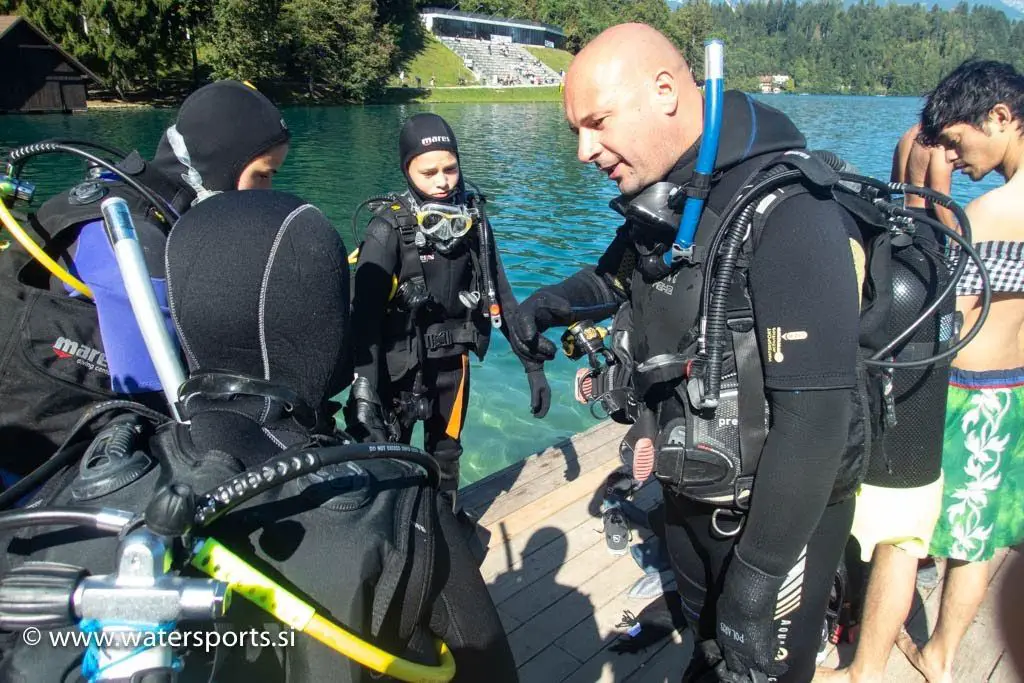
What do you offer at Bled?
At Lake Bled we can take certified divers to a few interesting places. The lake itself in summer is lovely for scuba diving, since the water is 24°C and a 5mm wet suit is all you need for one-hour dives. Until recently Lake Bled was not on the world map of diving location, but since we’ve been offering trips there it’s become more famous, and now we get people from all over.
Courses for all ages, new and experienced divers
When you’re underwater in Bled there’s lots of catfish, pike and carp swimming around you. We have special place for diving there, very hidden, and it’s only used by divers who come with us. So far no one has been disappointed, and we get a lot of positive reviews on TripAdvisor and Facebook. Night dives are also incredible there. Many small crabs are moving around, and of course big fish are much easier to see compared to diving in the day.
Some of what you can see in Lake Bled.
What if someone isn’t a certified diver?
For those we offer almost everything you need to get started. The first would be the Discover Scuba Diving program, which is actually most popular thing we offer at Bled. People visit the lake and of course they want to see what’s underwater. This program takes two to three hours, and you don’t need any previous knowledge of diving. We come with all the equipment, give a briefing, and by the end we make people wet and happy.
Get PADI certified at Lake Bled
After that many people continue to the next level, the Open Water Diver course. Once you pass this you can become a PADI Open Water Certified Diver. This is a two or three day course, and after that you can go diving all over the world to a depth of 18m with another diver, and it’s easy to do, plus all courses are conducted by very experienced instructors. We also offer many special courses, which you can learn more about by talking to us, or telling us what you want, including technical programs for the most advanced divers.
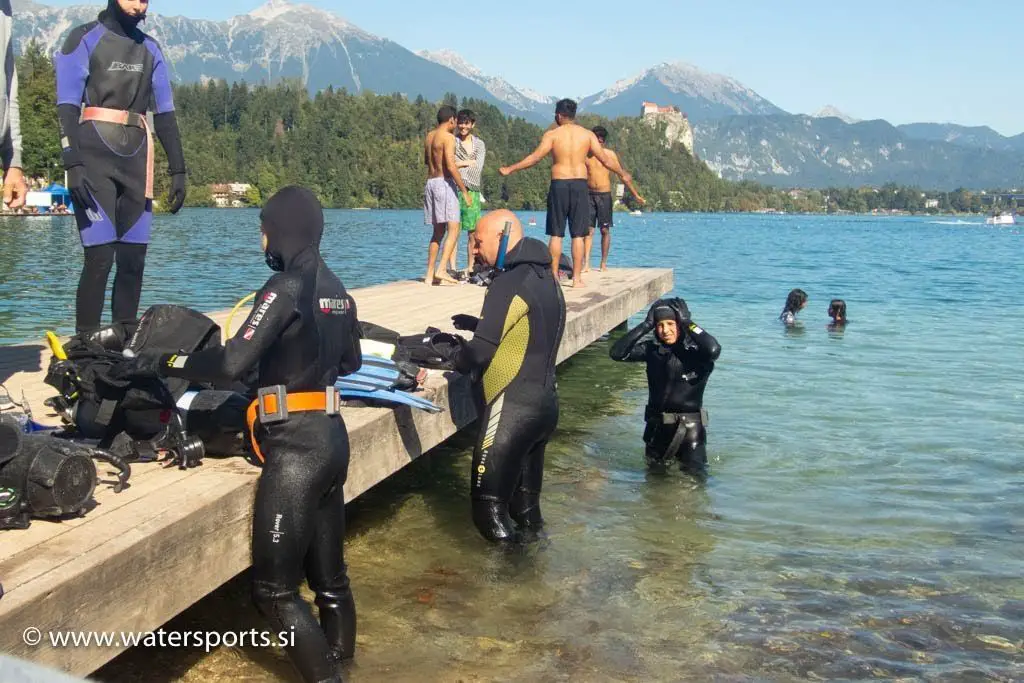
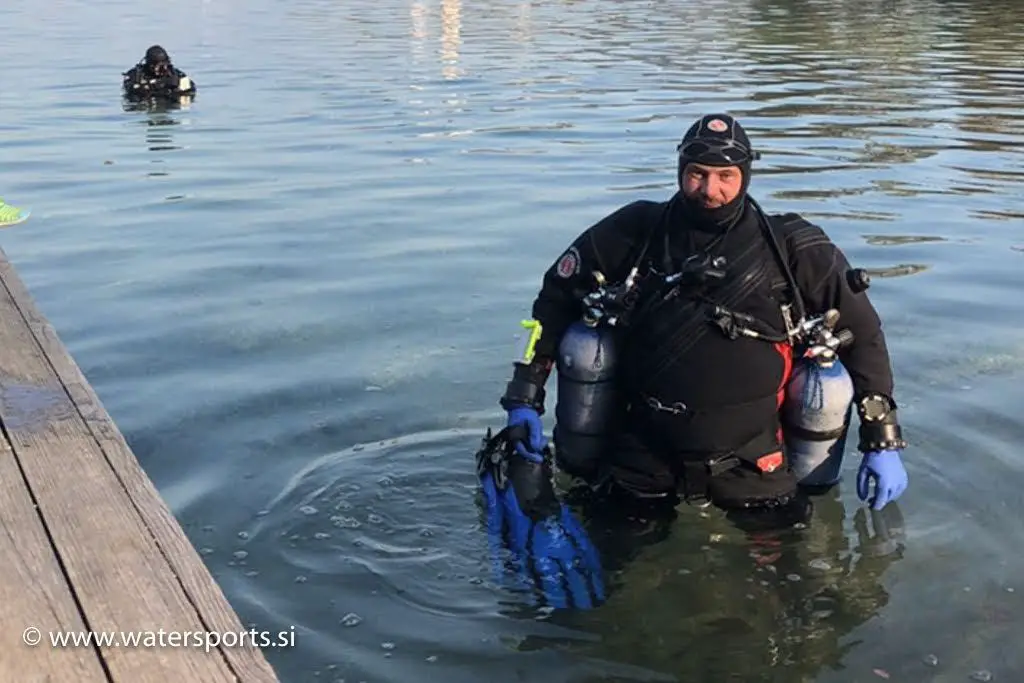
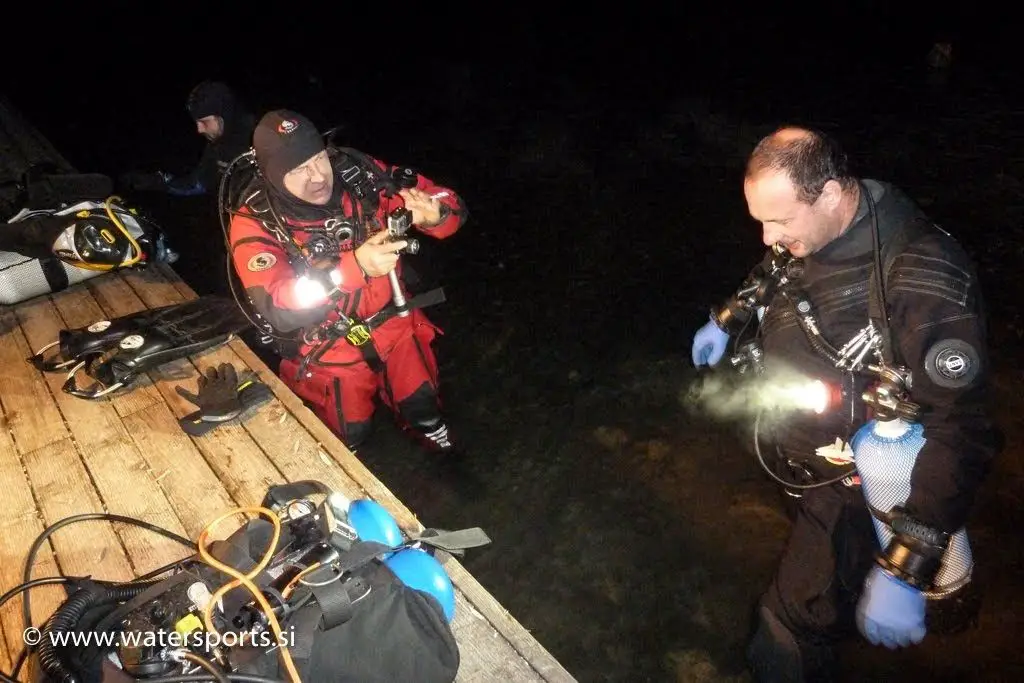
How long have you been offering this at Lake Bled?
I was first one who start commercial operations in 2012. The idea actually came up a year earlier, at the local diving club, but no one was offering something for tourists. It’s still early days at Bled for diving, but the place has a lot of potential – it just needs the local community to realize that diving can become part of the tourist offer.
What do people need to bring?
Just a smile, water, a towel and a swim suit, the rest we can provide. Of course, if someone has their own equipment and they want to use it then that’s no problem, they just need to bring it.
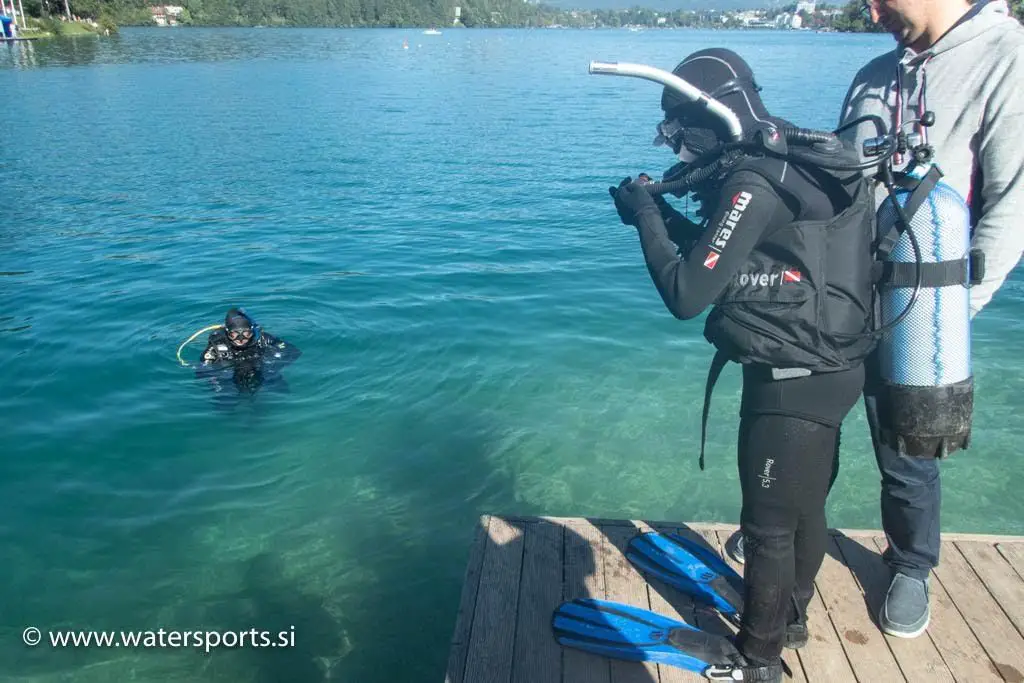
What else can people do on the water at Bled?
Well, I should say that we don’t support fishing there, since there it kills too many fish, even catch and release. Sorry, in my opinion fish are nice to see, not to hunt. Swimming is possible all around the lake, and there are public beaches. You can also rent a boat or just take a ride on a pletna, the traditional Bled boat. Many people also explore the world underwater with a simple mask, snorkel and fins, but away from the shore you should always have a support boat.
Diving part of Bled's growing tourist offer
How has Bled changed since you’ve been working there?
A lot, and the roads, especially in August, just can’t handle the traffic. Every year there are more tourists, and although that doesn’t disturb me it’s not so good for the people who live there. One problem, one of many, with mass tourism at Bled is it affects the water quality, as more people swimming there means more pollution, more suncream in the lake and so on, and this year there’s been a problem with green algae. There is an idea to try and develop a higher quality of tourism at Bled, not just mass tourism, but for that the area needs to offer more, and that’s something that diving can be a part of.
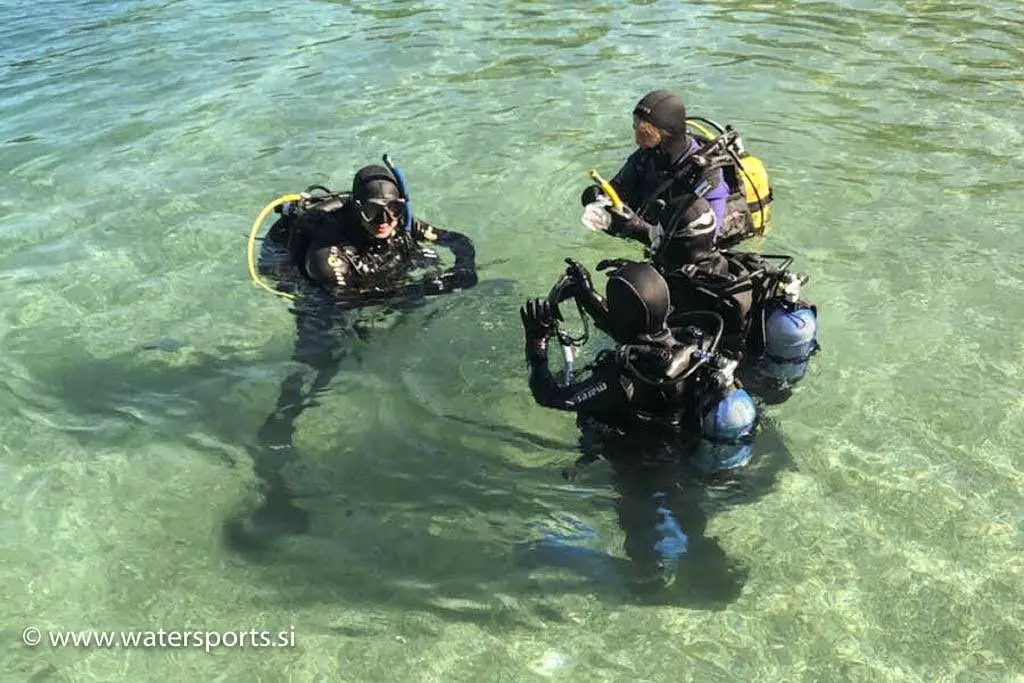
When is the diving season?
Business usually starts in June, and the busiest time is in August, when sometimes we just can’t serve all the people we’d like to. The traffic can be terrible then, if you come by car and not by train, so the best time to come is in the morning, for an 8am dive. For me the best time to visit for diving is in September, there are fewer people and the water is warm. People also come in the winter, when we do some dry suit specialty, TEC courses, and if there’s ice then we do ice diving and courses.
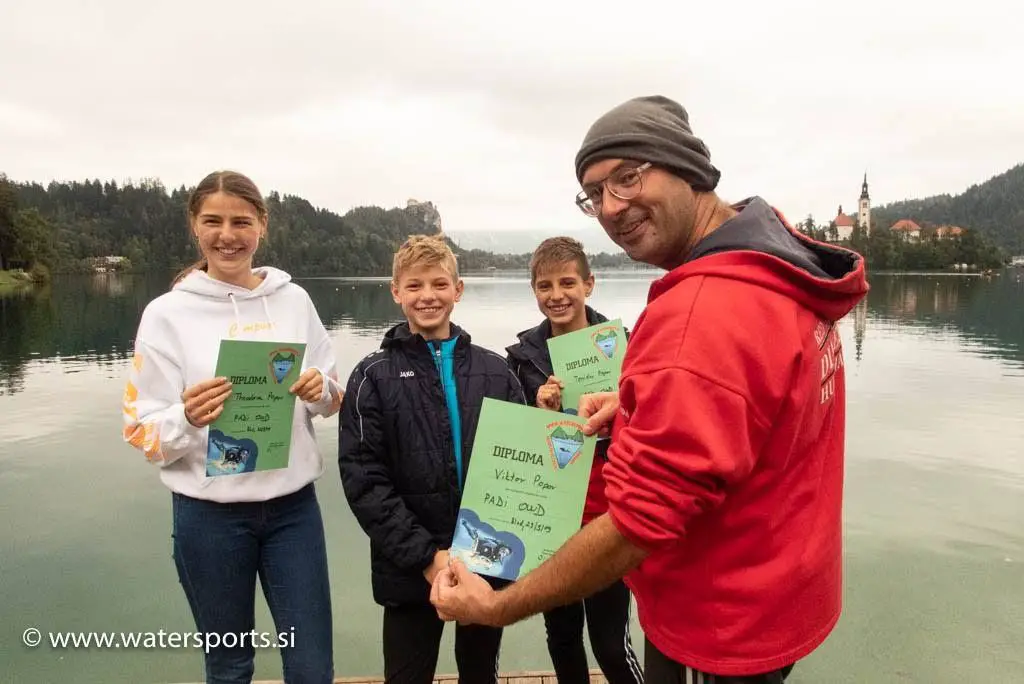
What other places do you dive?
Besides Bled we offer also diving nearby Lake Bohinj. There’s one unique and very beautiful diving place for advanced divers, in it’s a green area with lots of water and a slight current. We love it., although the lake itself is nothing special for diving, so we don’t do diving in there.
You can learn more about diving with Matjaž Repnik and his team at www.watersports.si/en, or by email at This email address is being protected from spambots. You need JavaScript enabled to view it., and with any luck we’ll get back to him soon to find out about diving in Slovenia’s caves.
Any list of Europe’s most beautiful places that wants some geographic variety is almost certain to include somewhere from Slovenia, and nine times out of ten that place will be Lake Bled. To its credit, CNN Travel has chosen to highlight another of the country’s increasingly less hidden gems, Lake Bohinji, although can’t resist a passing mention of the home of kremšnita:
Lake Bohinj is often disregarded in favor of the more popular Lake Bled.
But Slovenia's largest lake, set within the majestic Triglav National Park, is arguably just as spectacular.
Visitors can hire a bike or walk along the trails running around the lake to the impressive Savica waterfall or charming village Stara Fuzina.
Meanwhile, mountaineers have the option to strike out for the summit of Triglav if the weather is good.
Other places on the list include the Lofoten Islands (Norway), Shetland Isles (Scotland), Yorkshire Dales (England), Loire Valley (France), the Bavarian Forest National Park (Germany) and Barmouth (Wales).
You can see the full list here, while all our stories on Bohinj are here


